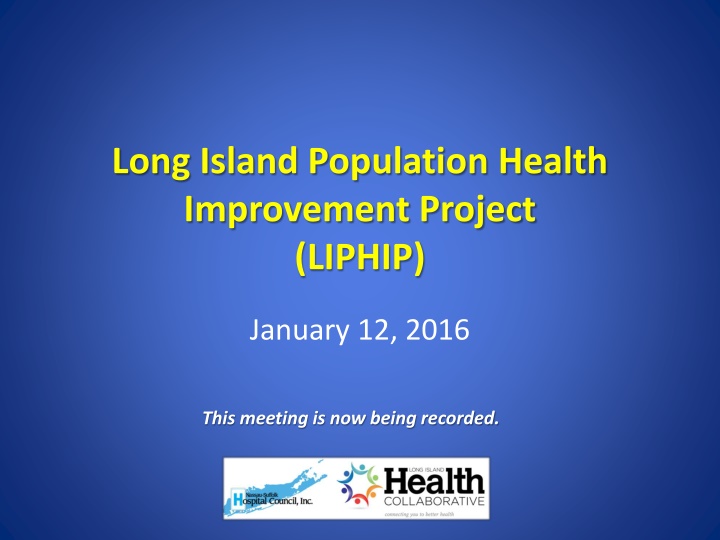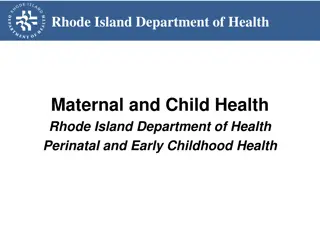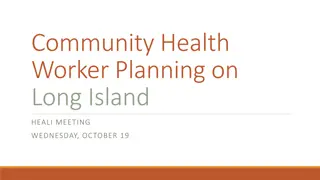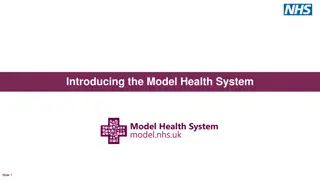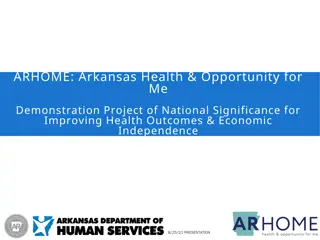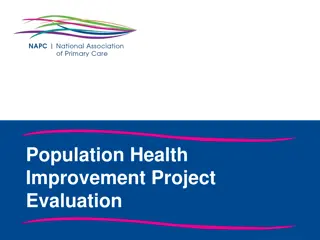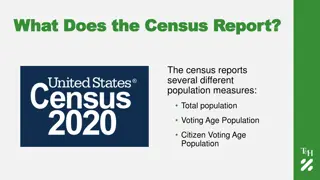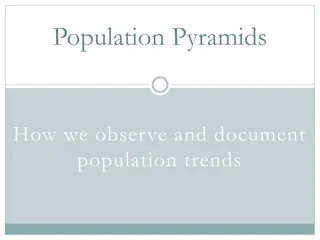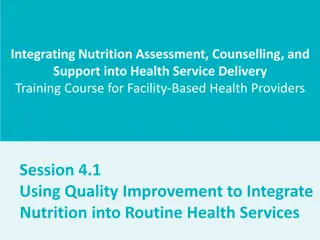Long Island Population Health Improvement Project (LIPHIP) Overview
Voluntarily established in February 2013, the Long Island Population Health Improvement Project (LIPHIP) aims to enhance community health by focusing on chronic diseases, obesity, preventive care, and behavioral health. The project involves stakeholders from hospitals across Long Island who collaborate on Community Health Needs Assessments. The program is part of the Population Health Improvement Program introduced by the New York State Department of Health in September 2014. The Long Island Health Collaborative, funded through LIPHIP, drives the project's goals with a focus on population health strategies and initiatives.
Download Presentation

Please find below an Image/Link to download the presentation.
The content on the website is provided AS IS for your information and personal use only. It may not be sold, licensed, or shared on other websites without obtaining consent from the author.If you encounter any issues during the download, it is possible that the publisher has removed the file from their server.
You are allowed to download the files provided on this website for personal or commercial use, subject to the condition that they are used lawfully. All files are the property of their respective owners.
The content on the website is provided AS IS for your information and personal use only. It may not be sold, licensed, or shared on other websites without obtaining consent from the author.
E N D
Presentation Transcript
Long Island Population Health Improvement Project (LIPHIP) January 12, 2016 This meeting is now being recorded.
LIHC/PHIP Establishment and Role February 2013: Voluntarily, stakeholders from across Long Island-hospitals convene to jointly work on Community Health Needs Assessments. Areas of Focus Chronic Disease Obesity Preventive Care and Management Behavioral Health as an area of overlay within intervention strategies. September 2014: New York State Department of Health introduces the Population Health Improvement Program (PHIP). LIHC sponsored programs and initiatives belong to LIHC member organizations and follow the collective impact model. The role of the PHIP team includes convening key players, building consensus, organizing projects and supporting the needs of members as related to population health strategies. We are here for YOU! December 2014: The Long Island Health Collaborative receives funding through the PHIP to become the primary work group associated with carrying out the goals of the PHIP grant.
Announcements School/Library Mailing and Engagement Public Libraries as Partners for Population Health
2017 PHIP Workplan In final phases of workplan execution with NYS Department of Health
Function of PHIP Steering Committee Steering Committee provides governance and consistency of purpose and messaging at all levels. It reviews proposed documents and policies, supervises timely execution of LIPHIP work plan activities, makes recommendations regarding LIPHIP operations, and serves in an advisory council capacity to the industry partners subgroup. Meets bi-monthly. Long Island Health Collaborative (LIHC) is the core workgroup of the LIPHIP, as its diverse membership is the embodiment of population health. Tasks and activities are accomplished through a subgroup structure, with staffing and other operational needs met by the LIPHIP staff. Meets monthly.
Data Projects Data Workgroup Meeting Community Health Needs Assessments, Improvement Plans and Service Plans Update on Geocoding SPARCS data Trip to Data Gen Asthma Coalition Schools Committee-Data for Federal Grant Funding by District Population Health Dashboard Drill Down of Community Member Survey Data and Prevention Agenda
Networking, Stretch Break & Sign up for Workgroup Participation
2017 Workgroup Projects and Reset Focus on workgroups: Public Education, Outreach and Community Engagement Academic Partners CLAS/Workforce Data Analysis Complete Streets/Nutrition and Wellness Behavioral Health
Behavioral Health Workgroup Monday January 23 at 11:00am
Public Education, Outreach and Community Engagement Thursday January 26, 2:00pm Provider Engagement Strategies Ready Feet Rally
Cultural Competency-Health Literacy Workgroup Activities Collaborative vendor exploration Review and negotiation of program proposals Dr. Martine Hackett, Hofstra University Development of Curriculum Components Planning November 7, 2016 CCHL TTT Organizational Lead Program Selection of participants
Preparing Core Group of Train the Trainers November 7, 2016 33 TTT participants certified to train: 7.5 hour TTT 1.5-2 hour CC-HL Staff Trainings
Program Outline and Variations 1.5-2.0 Hour Staff Training 7.5 Hour Train the Trainer Program Required Program Pre-Work Health Equity Social Determinants of Health Local Stories Place and Health Unconscious Bias Self-Reflection and Discussion Cultural Competency/Cultural Humility CLAS Standards Addressing cultural issues Cultural differences on Long Island Review of full 2 hour curriculum: Health Equity Cultural Competency/Cultural Humility Health Literacy Health Literacy How health literacy impacts health Guidelines for health literate materials Teach Back technique Facilitation Skills and Tips for Trainers Hands-On Practice for Trainers TTT Program Requirements and Expectations
Training Objectives 1.5-2.0 Hour Staff Training 7.5 Hour Train the Trainer Program Identify the role social determinants of health have on population health outcomes Define and identify cultural barriers Understand the relationship between place and health on Long Island Understand unconscious bias Describe unconscious bias Explain how social determinants affect health in communities on Long Island Understand how the National CLAS standards can help to reduce health disparities Apply the concepts of cultural humility in community based organizations Apply the concept of cultural humility in community-based organizations Identify tools to create an environment that is welcoming to people from all cultures Describe the components of health literacy Describe the components of health literacy Explain the teach back method Understand how to use the teach back method Personal Goals
Kirkpatrick Four-Level Training Evaluation Model Reaction: Participant reaction to training, instructor and curriculum content. Learning: Were all learning objectives met? Behavior: How information is applied post- training or what challenges prevent behavior change. Results: Were targeted health outcomes improved?
Feedback from Trainers LINCS Curriculum was simple to use and designed in a way that allows her to tailor the content to the audience she is presenting to. The focus on pockets of underserved communities is a curriculum highlight for her. EOC Within evaluations, someone commented that they liked how I made them apply it to their everyday workflow. I have learned that when you know your audience, you can personalize the training to them, and that goes a long way This training will increase awareness, reinforce what staff already know, and validate beliefs. Martine s video about suburbs hit home with my audience
Upcoming Meetings February 15, 2017: 9:30-11:30am (Marcum, 10 Melville Park Rd, Melville, NY) March 15, 2017: 9:30-11:30am Please bring your healthy donations!
